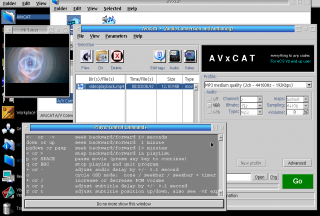

Picture settings - with changes immediately displayed (reencode)

Parallel jobs - you can run multiple jobs in the same time (multithreading)Īudio auto gain detect - it will parse the whole file and find the proper gain value (reencode) Job queue - you can add multiple tasks into a job queue Split or trim a file by given time points (no reencoding)īulk convert files using stream profiles or manual settings (no filter options for manual) It chooses an output with the biggest width of all source files. Merge different kind of files (different codecs, resolution, etc) into one file. Merge files with the same properties - no reencoding. Stream profiles - create and apply audio and video profiles Supports multiple video streams in the same file. Subtitles - srt, ass, ssa, mov_text, dvdsubĪdd multiple streams into one mkv, mp4 or any other container known by ffmpeg that accepts multiple streams (with or without reencoding). Stream conversion - almost any codec into:Īudio - aac, mp3, flac, pcm, vorbis, opus One feature was lacking from most of them, video stream copy (pass-through), that made me build this. I have inspired myself from a lot of media converters like Handbrake, WinFF and MkvMergeGui. It is intended to be simple and easy to use but also to be able to achieve complex tasks. So if that is the case, and you re-encode it, you may not see much of a difference other than generation loss.DmMediaConverter is a crossplatform FFmpeg frontend (GUI) exposing some of its features. The output from mediainfo may indicate the actual encoder. I'm not sure which encoder was used, but it could indicate that x265–an efficient encoder–could have been used. This library is responsible for muxing the file. Your H.265 input was created by ffmpegĪs shown in your console output: encoder: Lavf58.34.101, which is the libavformat library version. So if you take a H.264 input that was made from an inefficient encoder, then re-encode it using an efficient H.265 encoder you may see significant file savings despite compression unfriendly encoding artifacts present in the source. Your H.264 input may have been created by a hardware encoder which sacrifices quality-per-bit for encoding speed. Some encoders are crap no matter the format. So it may be unfair and unrealistic to compare H.264 to H.265. H.265 is a newer generation format than H.264, and in ideal situations H.265 can provide significant file size savings (but it can be much slower to encode).


 0 kommentar(er)
0 kommentar(er)
